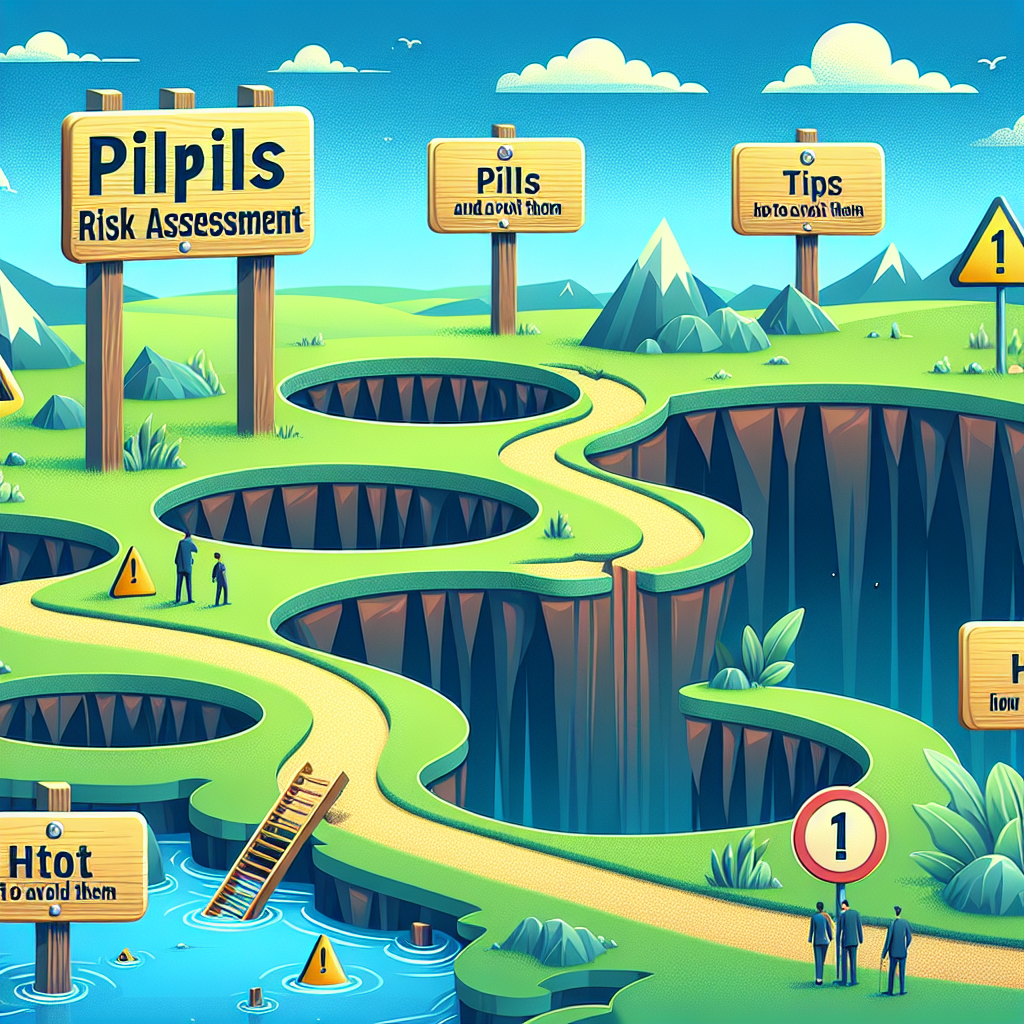
Introduction
In today’s fast-paced and ever-evolving landscape, organizations cannot afford to overlook risk assessment. Whether you’re managing a large corporation, a small business, or a startup, understanding how to effectively evaluate risks is crucial for survival and growth. The Top 5 Common Pitfalls in Risk Assessment and How to Avoid Them serves as a beacon for those navigating this intricate terrain.
Imagine crafting robust strategies based on thorough risk evaluations that lead to informed decision-making. Conversely, neglecting risk assessments can result in devastating consequences—financial loss, reputational damage, and even organizational collapse. This guide aims to illuminate these pitfalls and offer actionable strategies to sidestep them.
1. Inadequate Data Collection
Understanding the Problem
The first pitfall in risk assessment often stems from poor data collection. Without quality data, organizations end up making decisions based on assumptions rather than facts. According to a 2022 study by the Institute of Risk Management, 62% of organizations reported that inadequate data was their primary challenge in conducting effective risk assessments.
Case Study: XYZ Corporation
Take the example of XYZ Corporation, which fell into the trap of relying on outdated data for their risk evaluation. When facing an industry shift due to technological advancements, they did not account for the evolving market landscape because they based their assessments on data from the previous five years. As a result, their inability to adapt led to significant financial losses.
How to Avoid This Pitfall
- Embrace Diversity in Data Sources: Combine quantitative and qualitative data from various sources. Financial reports, market analysis, expert interviews, and employee feedback can provide a holistic view.
- Regular Updates: Continuously update your data to ensure you’re working with the most relevant information.
2. Ignoring Stakeholder Perspectives
Understanding the Problem
Another common misstep in risk assessment involves neglecting the insights and input of key stakeholders. When risk assessments are conducted in silos, crucial perspectives are often missed, leading to an incomplete risk profile.
Case Study: ABC Ltd.
ABC Ltd., a mid-sized tech firm, had a risk management team operating independently of other departments. When analyzing operational risks, they didn’t engage frontline employees who experienced issues daily. Consequently, the team overlooked critical pain points that resulted in inefficiencies, ultimately impacting project delivery timelines.
How to Avoid This Pitfall
- Involve Stakeholders Early: Facilitate workshops or brainstorming sessions to gather diverse perspectives.
- Conduct Surveys and Interviews: Use surveys or individual interviews to capture insights from a broad range of stakeholders.
3. Lack of Realistic Scenarios
Understanding the Problem
Risk assessments often fail when unrealistic scenarios are considered. Overly optimistic or overly pessimistic assumptions can skew risk evaluations. Risk management should be about realistic expectations based on genuine capabilities and market conditions.
Case Study: DEF Industries
DEF Industries conducted a risk assessment projecting that their new product line would see a 30% market share within the first year. Based on this assumption, they invested heavily in production. However, they did not fully account for competitor actions and market resistance. The result? Excess inventory and wasted resources.
How to Avoid This Pitfall
- Scenario Planning: Develop multiple potential future scenarios, examining best-case, worst-case, and middle-ground options.
- Data-Driven Models: Use statistical models and forecasting techniques that rely on historical data to create more realistic scenarios.
4. Overlooking Continuous Monitoring and Review
Understanding the Problem
Risk management is not a one-off task; it requires continuous vigilance. Organizations often treat risk assessments as a checkbox exercise, forgetting that new risks can emerge and existing risks can evolve over time.
Case Study: GHI Financial Services
GHI Financial Services conducted a detailed risk assessment at the start of the year and implemented risk mitigation strategies. However, they failed to review these assessments regularly, leading to gaps exposed by new regulatory changes. The oversight cost them a significant penalty when they were unable to comply.
How to Avoid This Pitfall
- Establish a Regular Review Schedule: Set specific intervals—quarterly reviews, for example—to revisit risk assessments.
- Create a Dynamic Risk Management Framework: Adapt the framework so it can incorporate newly identified risks quickly and efficiently.
5. Failure to Communicate Risks Effectively
Understanding the Problem
Even with a thorough risk assessment, its value is diminished if the findings are not communicated effectively. Poor communication can lead to confusion and lack of action among employees and stakeholders.
Case Study: JKL Healthcare
JKL Healthcare successfully identified several operational risks but failed to communicate these findings to staff. Consequently, employees continued to engage in practices that exposed the organization to unnecessary liability.
How to Avoid This Pitfall
- Develop Clear Communication Channels: Utilize newsletters, meetings, and intranet updates to convey risk assessment findings.
- Train Employees: Regular training sessions to ensure that all employees understand the identified risks and the behavior adjustments needed.
Conclusion
The Top 5 Common Pitfalls in Risk Assessment and How to Avoid Them underscore essential lessons for every organization. Effective risk assessment is not just about identifying risks—it’s about creating a culture that embraces continuous assessment, adaptive strategies, and clear communication. By avoiding these common pitfalls, organizations can fortify their resilience against uncertainties.
Actionable Insights:
- Invest in Quality Data: Prioritize robust data collection processes.
- Engage Stakeholders: Involve a variety of voices in the risk assessment process.
- Adapt to Realism: Always assess risks through a realistic lens.
- Regular Reviews: Continuously monitor and update assessments.
- Effective Communication: Ensure that findings are shared clearly across the organization.
FAQs
1. What is risk assessment?
Risk assessment is a systematic process of identifying and evaluating risks associated with a specific situation or organization, which aids in informed decision-making.
2. How often should risk assessments be conducted?
It’s advisable to conduct risk assessments at least annually and update them quarterly or whenever significant changes occur in your organization or the market environment.
3. Can small businesses benefit from risk assessment?
Absolutely! Small businesses can uniquely benefit from risk assessments by safeguarding against potential losses and prioritizing proactive strategies for growth.
4. What tools can help in risk assessment?
Various tools are available, including spreadsheets, risk management software, and analytics applications that support data modeling and scenario analysis.
5. Is communication important in risk assessment?
Yes, effective communication ensures that all stakeholders understand risks and can take appropriate actions to mitigate them, fostering a proactive risk management culture.
By applying these insights, organizations can better navigate the complexities of risk management, securely steering through both opportunities and challenges.















